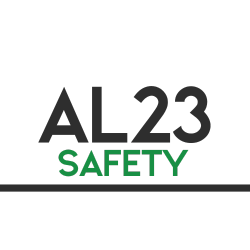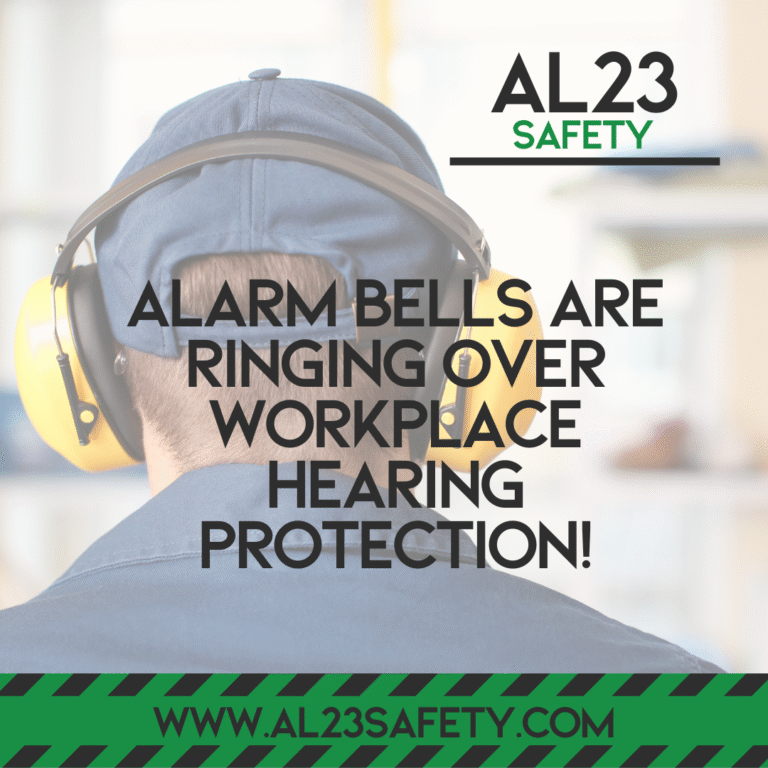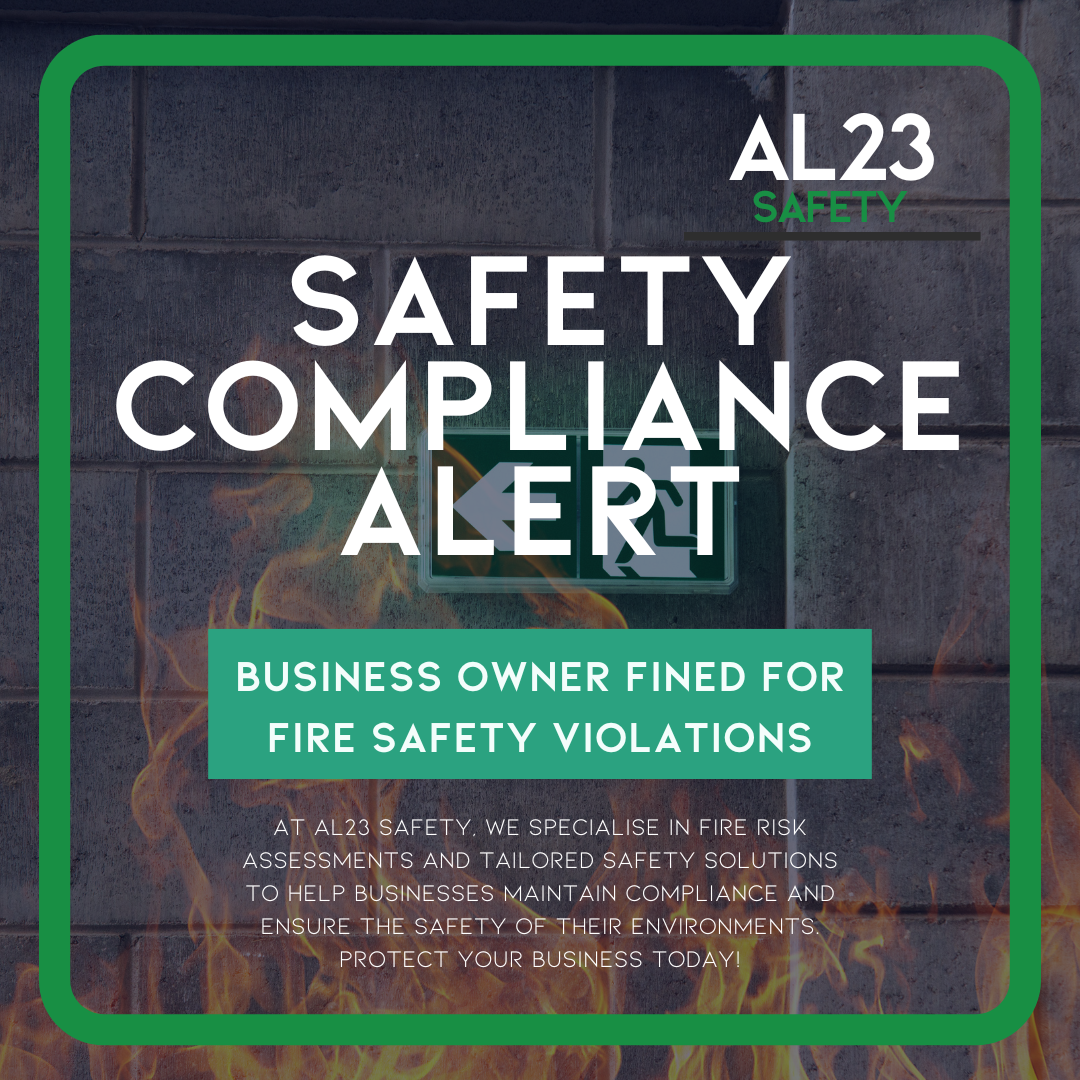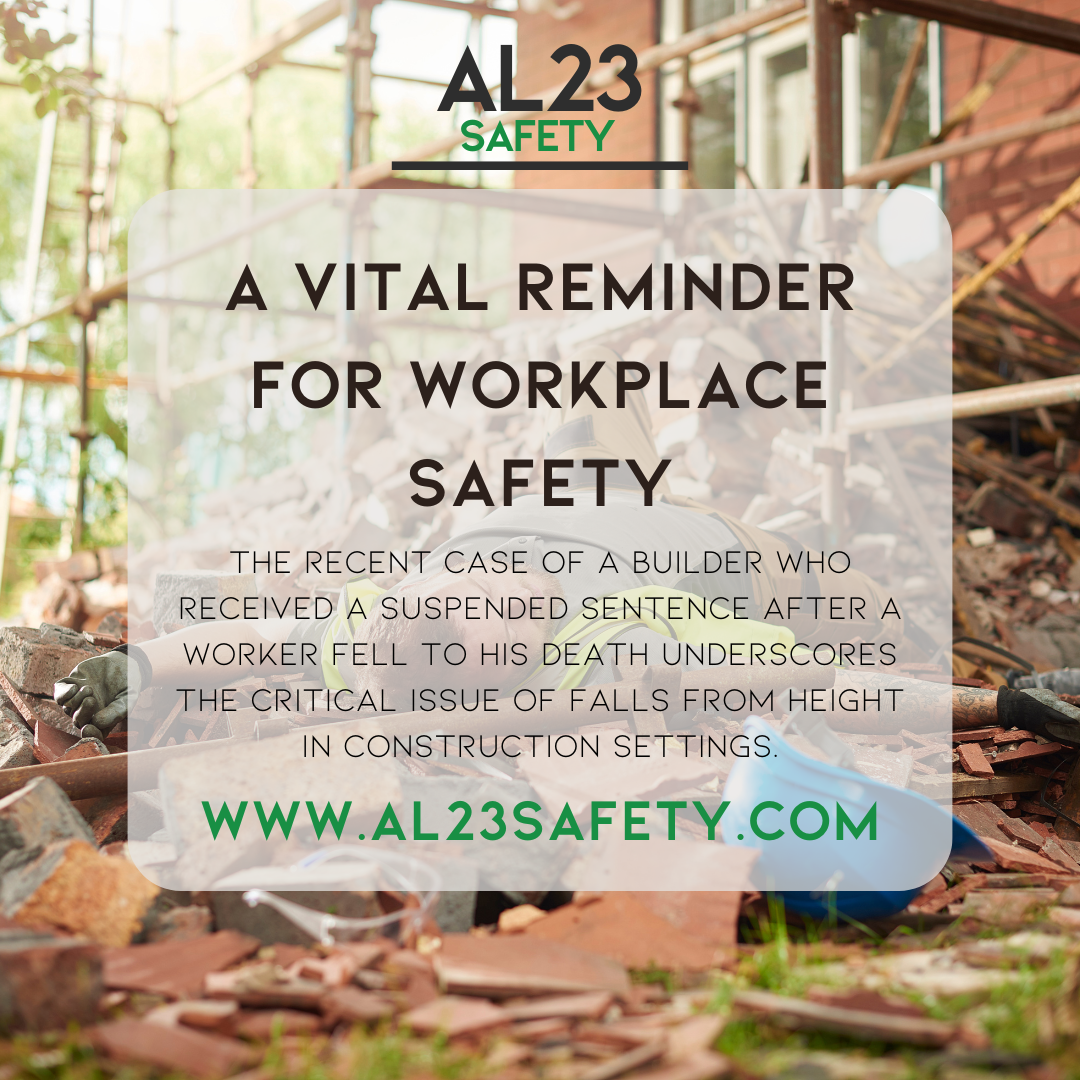Workplace hearing protection is a vital aspect of employee safety, yet recent findings from the Health and Safety Executive (HSE) reveal significant gaps in how businesses manage noise-related risks. With 75% of employees in noisy environments lacking adequate knowledge about hearing protection, employers face an urgent call to action. At AL23 Safety, we’re committed to helping businesses bridge these gaps through effective training, compliance support, and tailored safety solutions. In this blog, we outline five critical steps to enhance workplace hearing protection compliance, ensuring your workforce is safeguarded against hearing damage.
Why Workplace Hearing Protection Matters
Exposure to high noise levels in the workplace can lead to irreversible hearing damage, impacting employees’ quality of life and productivity. The HSE’s recent inspection campaign highlighted that many businesses fall short in meeting hearing protection compliance standards. Beyond providing the right equipment, employers must ensure employees understand how to use it correctly and recognise potential risks. Non-compliance not only risks employee health but can also lead to legal and financial consequences.
Step 1: Implement Comprehensive Training for Employee Hearing Safety
One of the most alarming HSE findings is that 75% of workers in noisy environments lack the knowledge to manage their hearing protection effectively. Training is the cornerstone of hearing protection compliance. Employees need to understand how to wear, store, and maintain their hearing protection equipment. Regular training sessions should cover proper fitting techniques, the importance of consistent use, and how to identify damaged equipment. By empowering workers with this knowledge, businesses can significantly reduce the risk of hearing damage.
Step 2: Adopt the HSE’s CUFF System for Noise Risk Management
The HSE recommends the CUFF system, Condition, Use, Fit the ear, and Fit for purpose as a simple yet effective framework to ensure workplace hearing protection is functioning correctly. Employers should integrate this system into their safety protocols. Regularly check the condition of hearing protection devices, ensure they are used consistently, verify they fit properly, and confirm they are suitable for the specific noise levels in your workplace. This systematic approach enhances employee hearing safety and demonstrates commitment to HSE hearing protection standards.
Step 3: Ensure Audible Warning Signals Are Heard
A critical oversight identified by the HSE is that 95% of employers fail to verify whether workers can hear essential warning signals while wearing hearing protection. In high-risk environments, such as construction sites or factories, audible alerts are vital for safety. Employers must test hearing protection devices to ensure they don’t block critical sounds, such as alarms or machinery warnings. This step is essential for balancing noise risk management with overall workplace safety.
Step 4: Foster a Culture of Health and Safety
Workplace hearing protection compliance goes beyond equipment and protocols it’s about building a safety-first culture. Encourage open communication about hearing protection, where employees feel comfortable reporting issues or damaged equipment. Regular safety audits and feedback sessions can help identify gaps in your hearing protection programme. By prioritising employee hearing safety, businesses can create a workplace where health and safety are valued, boosting morale and productivity.
Step 5: Partner with AL23 Safety for Tailored Solutions
Navigating the complexities of hearing protection compliance can be challenging, but you don’t have to do it alone. At AL23 Safety, our expert consultants provide tailored solutions to meet your business’s unique needs. From conducting noise risk assessments to delivering bespoke training programmes, we help you achieve full compliance with HSE hearing protection standards. Our goal is to empower your workforce with the knowledge and tools needed to stay safe in noisy environments.
The Path to a Safer Workplace
Investing in hearing protection is not just about meeting legal requirements it’s about protecting your most valuable asset: your employees. By implementing these five steps, businesses can address the gaps highlighted by the HSE, reduce the risk of hearing damage, and foster a safer, more compliant workplace. AL23 Safety is here to support you every step of the way, offering expert guidance to ensure your hearing protection programme is robust and effective.
For businesses ready to take action, AL23 Safety is your trusted partner in achieving workplace hearing protection compliance. Contact us today to learn how we can help you create a safer, healthier, and more compliant workplace. Let’s work together to protect your workforce and meet HSE hearing protection standards.



